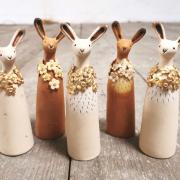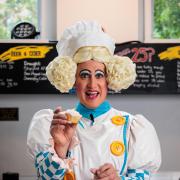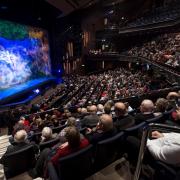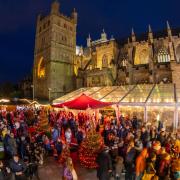Reviving the craft of willow crab pot-making, Sue Morgan is resurrecting a rural tradition. Lucy Flatman finds out what inspired her

Sue Morgan is the wife of a full-time fisherman and knows a thing or two about the history of crab fishing, particularly in her hometown of Hope Cove. As the craft of willow pot-making disappeared with the emergence of newer, more durable technologies, Sue was compelled to keep the tradition alive.
There is evidence of crab pot fishing in Hope Cove from 1800, although it is thought to have been around long before that. As the local pilchard fishing trade died out, fishermen proceeded to fish for lobster and crab in handmade ‘inkwell’ pots made from willow.
Historically, fishermen made their own crab pots in months when they couldn’t fish. Made from willow or ‘withy’, grown in local groves that used to number into their hundreds in coastal villages, they would spend the winter months producing the pots.
In the months of January and February they would harvest all their willow, which would remain fresh and supple if stored correctly until the spring. An efficient pot-maker could manufacture a pot a day and would have up to 60 pots.
The lifetime of a withy pot however was only a year; they would become damaged by wear and tear in the sea and would rot when on land. Crabs too would damage pots by clawing their way between the bars, so fishermen would take lengths of willow out with them and make quick repairs.
Fresh fish would be secured with a ‘skiver’ (wooden skewer) to bait the pots and, as such, in the past crab fishermen would spend an enormous amount of time fishing for bait as well as crabs. The flat, wide-based inkwell pots used in Hope Cove are thought to be designed to suit the sandy, flatter seabed out of the cove and in other areas would have been narrower or wider still, depending on location.

Fishing with withy pots is no longer practised for many reasons. Advances in technology now see most commercial fishermen using plastic or metal ring and net pots. Modern plastic and net pots have a life expectancy ten times that of a willow pot. They can also be stacked on deck effectively, unlike withy pots which had to be spread across small boats.
Sue’s husband David is the last remaining full-time crab fisherman in Hope Cove and was taught to fish by the late Eric Jarvis in the early 1970s. David was never taught the art of crab pot-making, as he always fished with wire and coated plastic pots, but Sue learned the art from Eric just before he died in 1992.
She saw how quickly technological advancements meant that traditional withy pots were being discontinued and was determined not to lose the knowledge. Traditionally crab pot styles and sizes varied from village to village and Sue makes inkwell pots in the traditional, accurate Hope Cove style.
Pots are made in three stages; the funnel, the ‘ringing around’ and the ‘bottoming in’. Little equipment is required, save for a mule made of hardwood, drilled with holes to put the long standards in to form the funnel of the pot.
Sue uses traditional mules, a name given to many workhorse tools after the hardworking donkey, dating from the 1950s, which she rescued from the local lifeboat house. She finishes the base of the pot by plaiting all the loose strands together and weaving them through the firmer standards.
It took Sue two years to perfect the art and she has produced pots for a variety of different clients including restaurants, holiday makers and flower arrangers. She grows her own willow in groves around the cove and sources any extra needed from Somerset. She harvests the willow at the beginning of the year and weaves it while it’s green (living) and supple.
A skilled basket-maker, Sue has also made many other examples of baskets and woven structures. From her home in Hope Cove these pieces hang from the ceiling of her conservatory, which she uses as a base for her crab pot-making courses.
Her knowledge of the craft and research into its history has made her a local and passionate expert. Through research, writing and practical demonstration Sue hopes to pass on the knowledge to keep the tradition alive for generations to come.
For more information contact Sue Morgan on 01548 560237 or e-mail crabpotcellars@hotmail.com



























